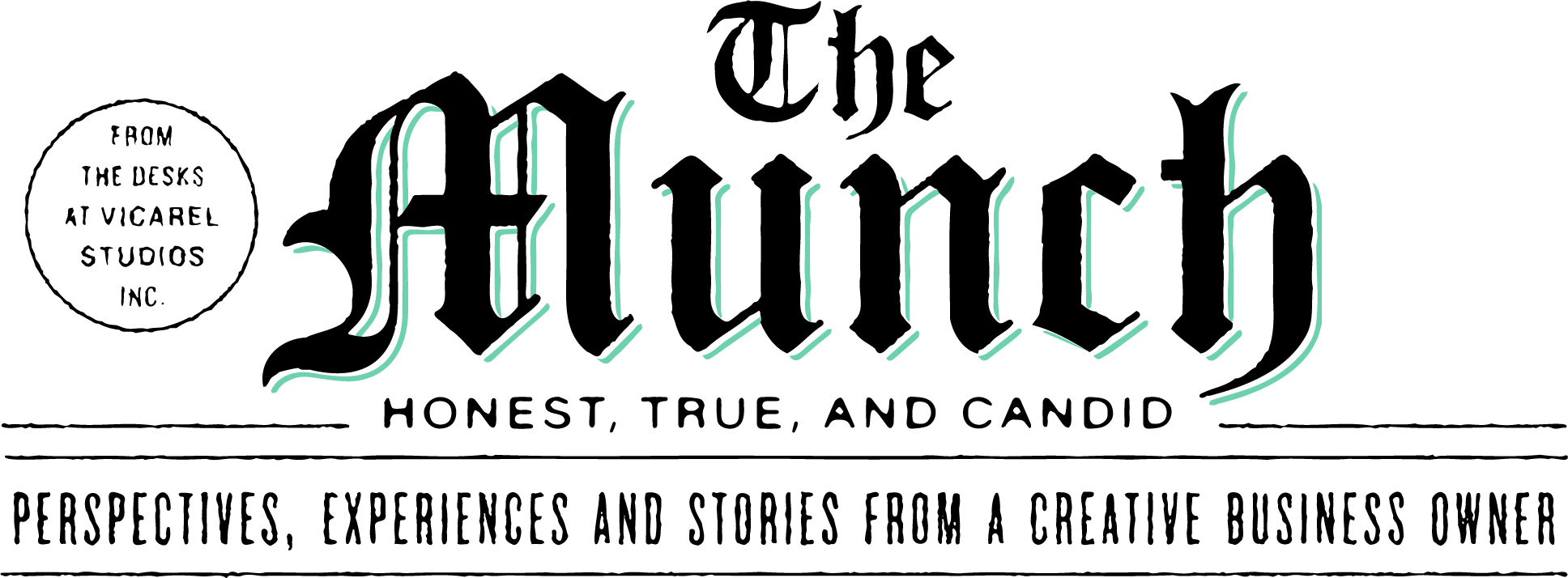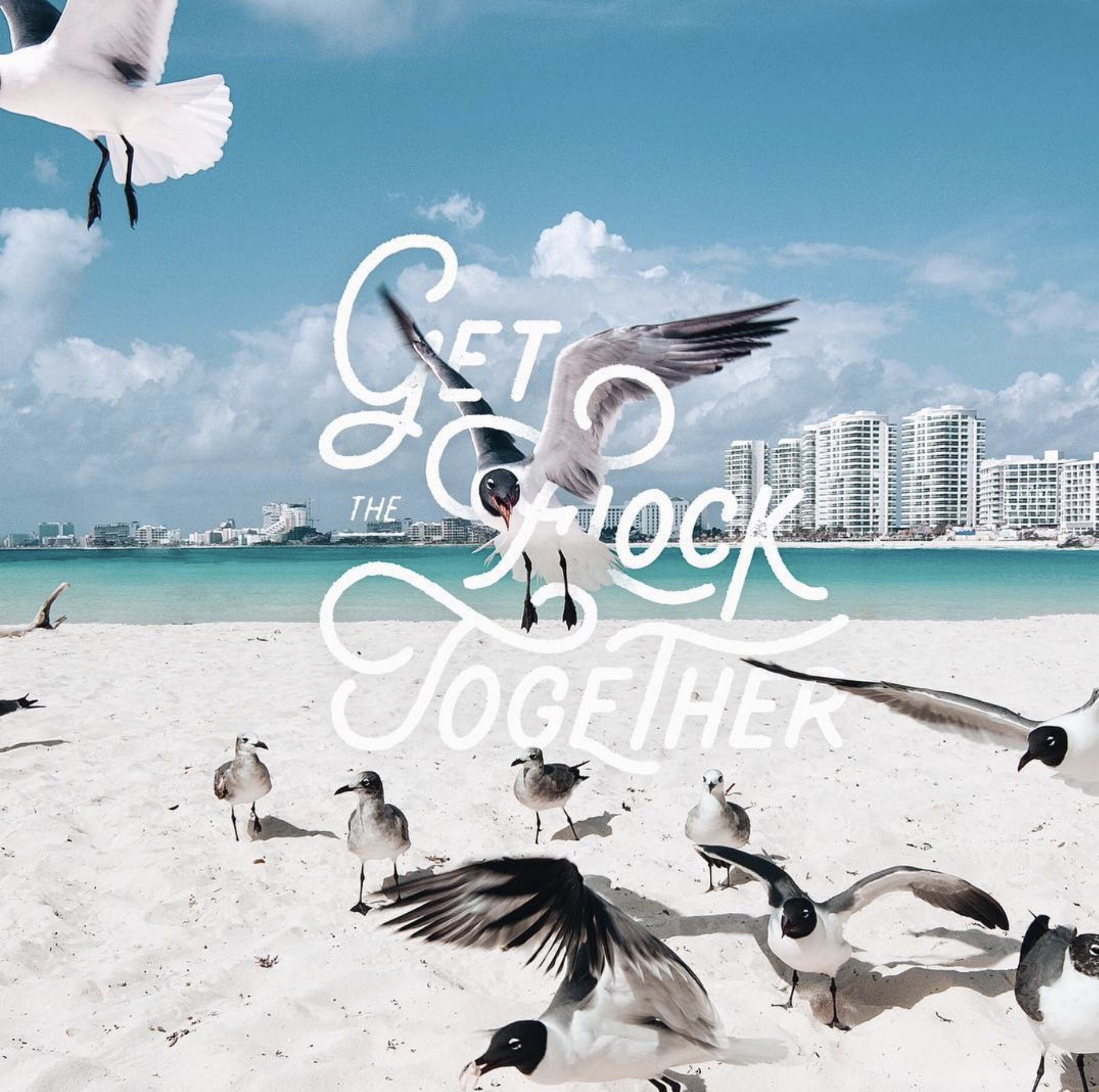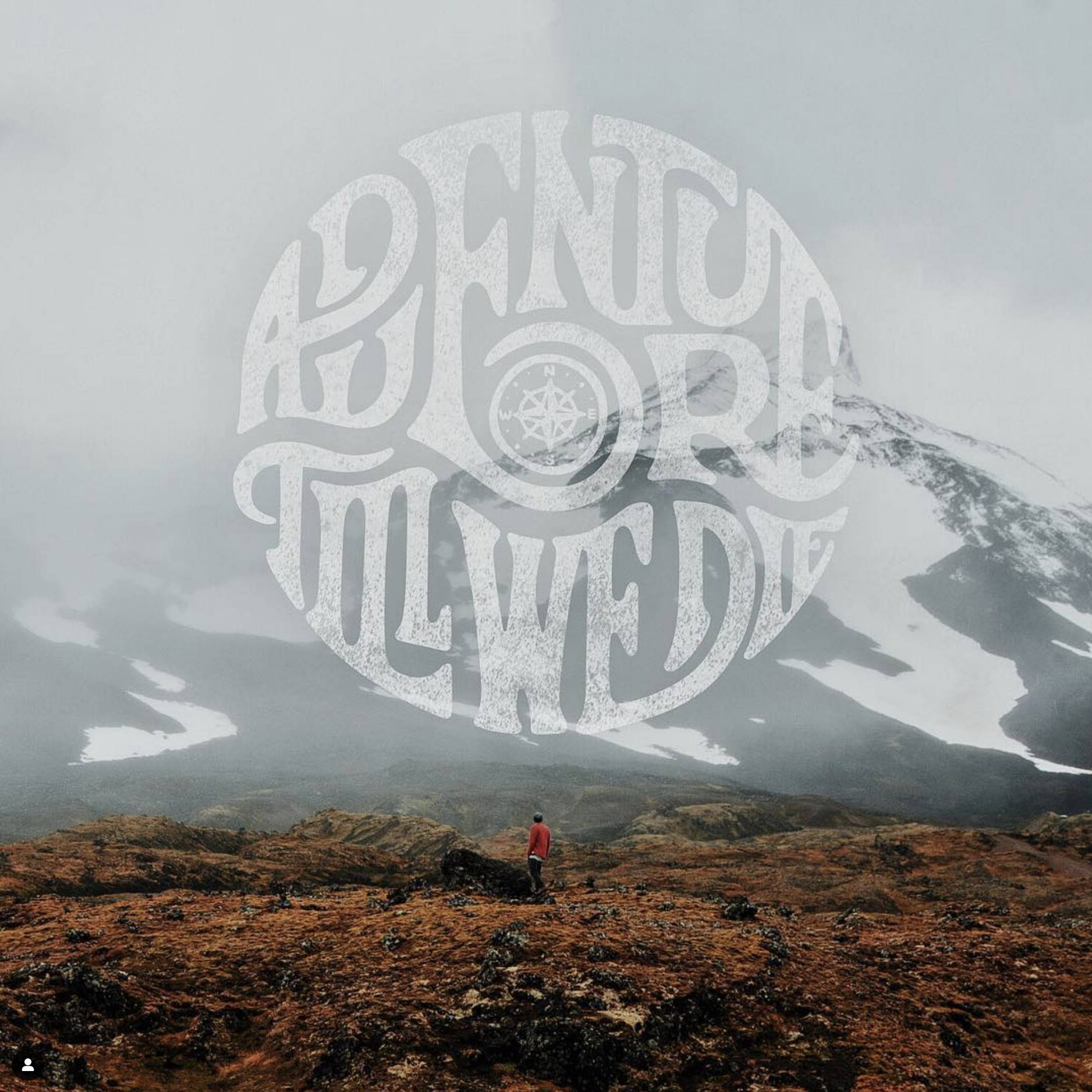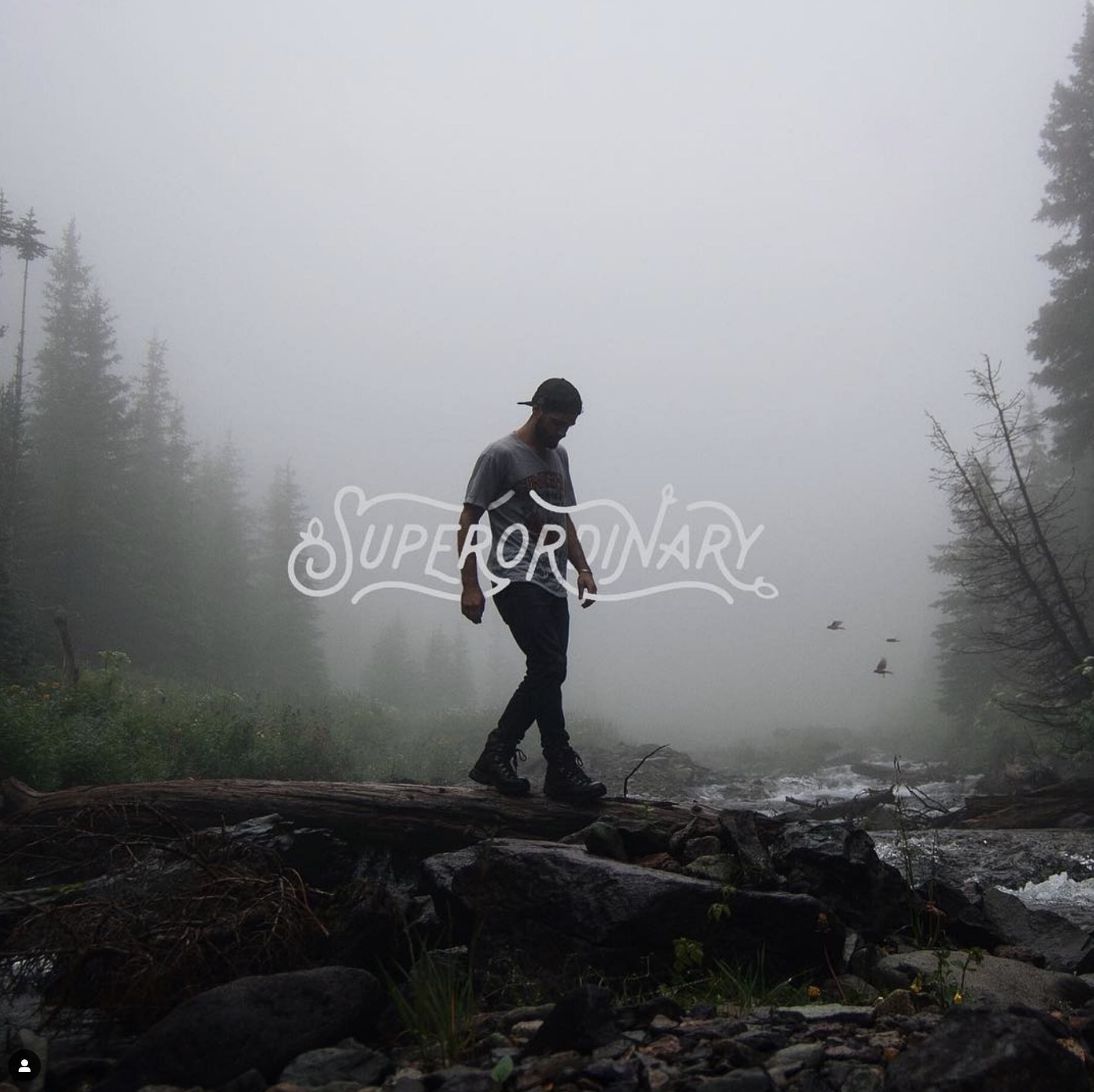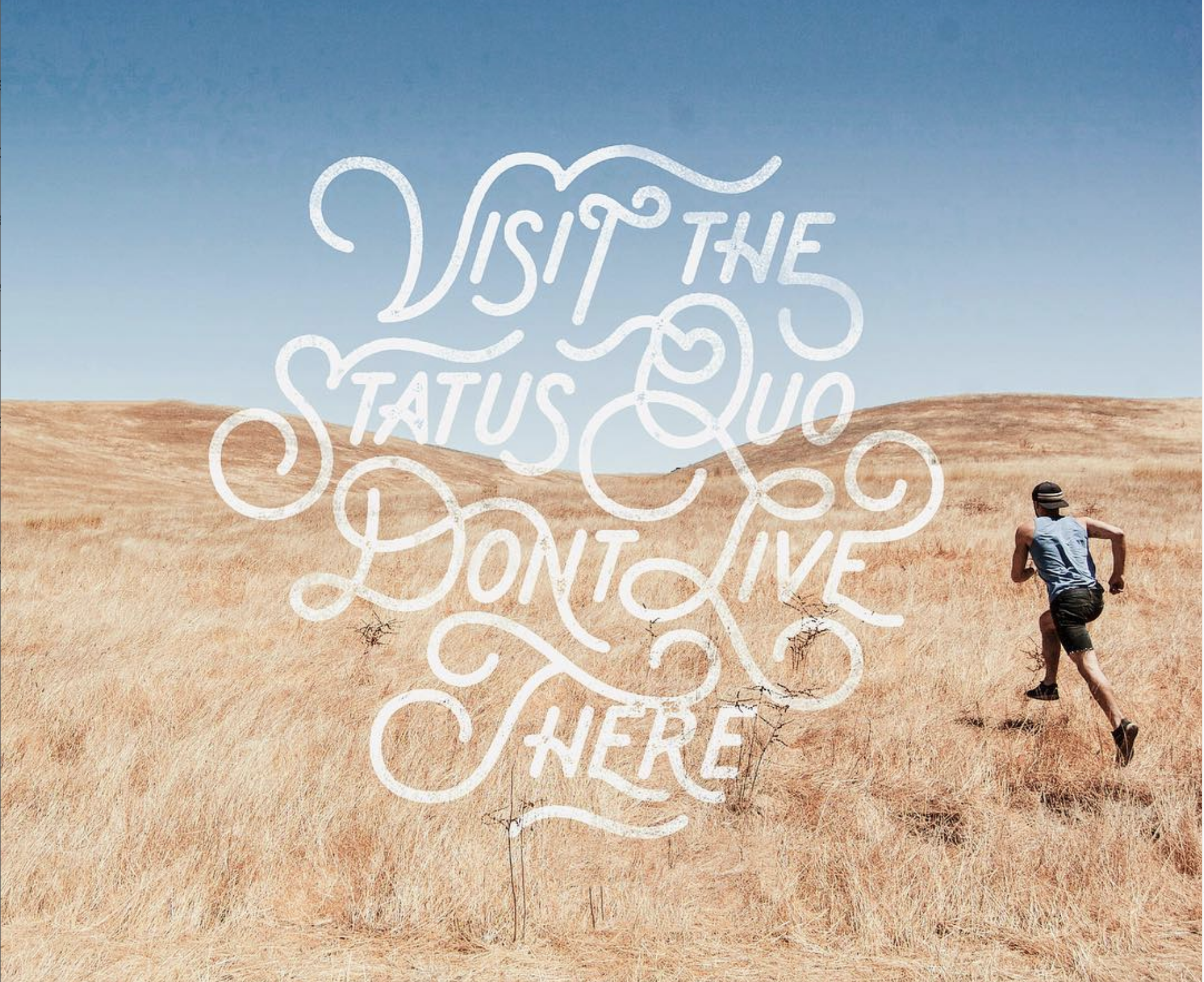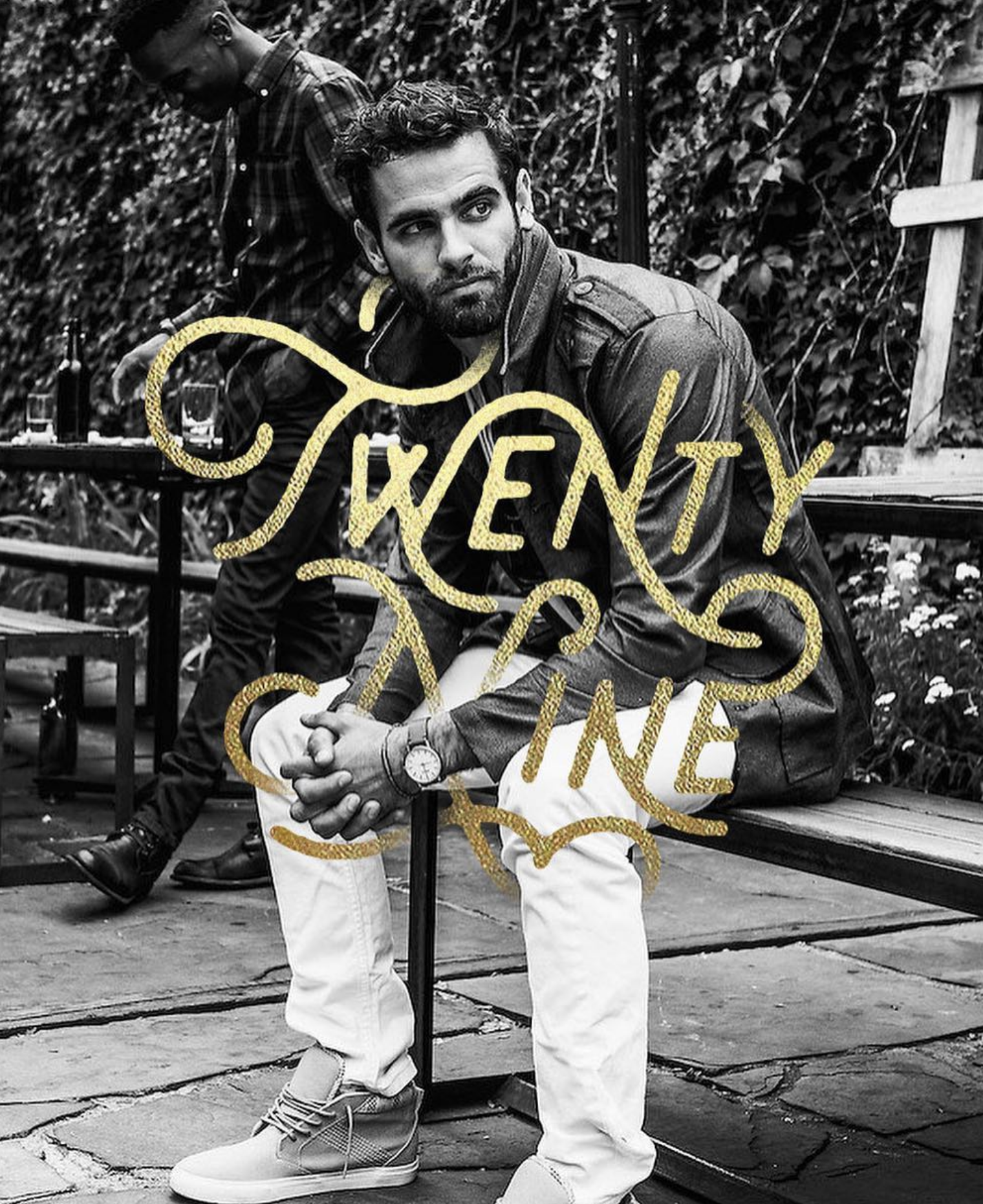Passion projects: building a portfolio that attracts dream clients
Vol. 095
Passion projects: building a portfolio that attracts dream clients
Why and how to create quality passion projects that leverage your strengths and interests and lead to the client work of your dreams.
Passion projects can be a fantastic way to push your portfolio in the direction of the creative work you want to be hired to create.
Your portfolio should be filled with only the work that you want to be doing, not just the work that you've done.
Your clients will hire you for what they see, and what they understand. Not "what you could do". If your clients aren't already hiring you for the work that you love, it might be time to create a few passion projects.
Years ago I started a series of adventure-inspired lettering pieces. This passion project was an opportunity for me to experiment with lettering and integrating that typography with photos. This passion project ultimately led to countless paid projects where I had the opportunity to leverage exactly this skillset. I’ve now been paid 10’s of 1,000’s of dollars to do this… all because it started first as a passion project.
Here's how how to create a successful passion project that gets clients to hire you for the work that you love.
Why should you create a passion project?
1) Passion projects allow for creative freedom and expression
Passion projects provide an opportunity to work on something that you're truly interested in and passionate about. This creative freedom can lead to work that is truly unique to you, your interests and your process. Your passion projects can be industry specific, material specific, or skill-set specific.
2) Passion projects help you develop your skillset
Creating work from your true passions can serve as an opportunity to experiment with new techniques, tools, and ideas. With the development of AI, a constantly evolving creative industry, and constant technology and program advancements, these passion projects are the excuse you need to learn and play. This experimentation can ultimately make you a more versatile, valuable and multi-facited designer.
3) You can build up your portfolio with work that you want to be creating through passion projects
There is almost no better way to build out your portfolio with work that showcases your personal interests and design aesthetic than with passion projects. Choosing your own project, deliverables, aesthetic and style enables you to create EXACTLY what you wish you were creating for other brands or businesses. As I mentioned before, clients hire what they see. They hire what they understand. By creating a project that shows what you can do, you’re more likely to attract more clients that align with your design style and interests.
4) There are always networking opportunities through creating passion projects
Passion projects can be a way to connect with like-minded clients or other individuals in the design community. Of course, once your project is completed, you should be sharing it on social media (and even submitting it on design blogs and forums) which can lead to collaborations, connections and opportunities with potential clients and collaborators.
5) Creating a passion project is creatively satisfying: it’ll scratch your creative itch
If you’re looking for a way to feel creatively satisfied, there’s no better way than a passion project. Creating something for you as opposed to for a client will allow you to create what you want in the style that you want. Doing this will set off the dopamine receptors and this will keep you motivated and excited about creating work.
How to create a successful passion project?
It’s easy to “get lost in the sauce” when creating a passion project. You need to be sure to setup some parameters and guidelines so that this can be a project that supports your creative growth, not a project that slows you down and takes years to complete.
1) Define the goals and objectives for the project
Before starting a new passion project, it's important to define your goals and objectives.
What do you hope to achieve with this project?
What industry, client or skillset are you trying to highlight?
What are the deliverables? What are you actually creating?
Having a bit of a plan will help guide your decisions and keep you moving forward throughout the project.
2) Choose a project, industry, graphic style or medium that you want to be hired for in the future
The best passion projects are ones that leverage your strengths as a graphic designer. Consider where the gaps in your portfolio lie, and think about how you can fill those gaps with the deliverables created from this project.
You want this project to be something that your ideal client sees and thinks “oh, yeah, we need this for us too!”
Which nicely plays into the next point…
3) Identify the ideal client or target audience for your project
It's important to consider “why” you’re creating your passion project.
Are you trying to work with a specific client?
Are you trying to get better at a particular skillset?
Do you want to be hired by a specific brand/industry?
Is there a gap in your portfolio that you’re trying to fill?
As you answer these questions for yourself, think about who you’re creating this piece for. What does “that person” want to see and/or understand about your project?
This may feel superfluous; however, I firmly believe that doing this will help guide your design decisions and ensure that what you actually produce resonates with your intended audience and has the impact on your portfolio that you actually intended.
4) Passion projects need a timeline and plan
I know — that feels a bit too structured. But, if you don’t set yourself a deadline, you’ll work on your passion project forever. Creating a timeline and even a rough plan for your passion project will help keep you moving in the right direction, and it will ensure the most efficient use of your time. Don’t overthink or over plan, but plan.
5) Have some sort of marketing or your distribution strategy
Here again, this doesn’t need to be anything profound; but you need to be sure you actually launch this project as opposed to letting it fade into the darkness of the internet.
Once your passion project is complete, it's important to have a process for how you will share it with the world.
Consider the channels that are best suited for your project, target audience/client, or industry. Whether that’s social media, your website, design blogs and forums, or otherwise.
Be sure to have a bit of a plan and process in place to promote all of the hard work that you just put in on your passion project.
Creating passion projects is truly one of the best ways to evolve your portfolio into a body of work that you want to be hired for.
If your portfolio is representative of the work you want to be creating, but only the work that you have been creating, then your clients will continue to hire you for just that.
Take the time to create what you want to be doing — trust me, it’s worth it.
Cheers,
Adam

